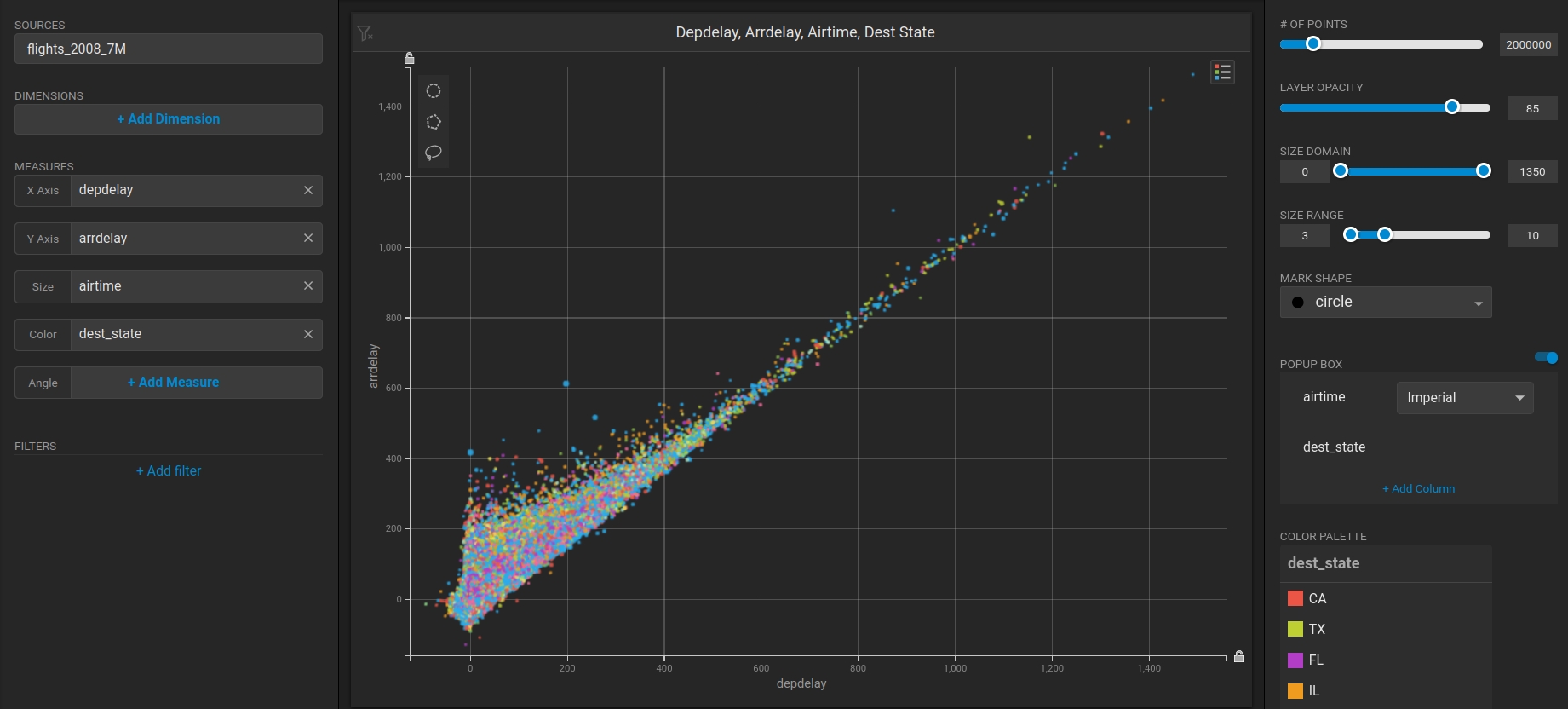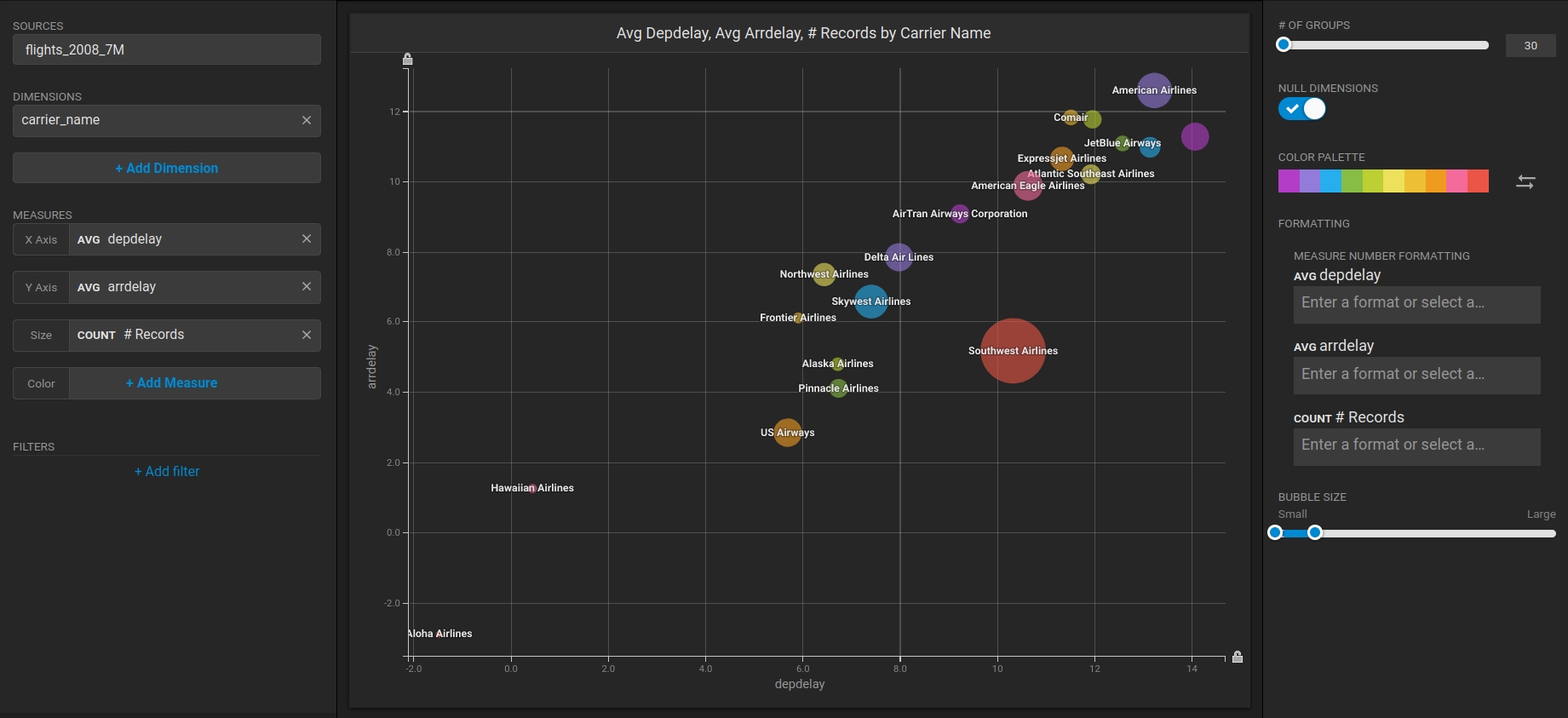HEAVY.AI Installation on Ubuntu
This is an end-to-end recipe for installing HEAVY.AI on a Ubuntu 22.04 machine using CPU and GPU devices.
The order of these instructions is significant. To avoid problems, install each component in the order presented.
Assumptions
These instructions assume the following:
You are installing on a “clean” Ubuntu 22.04 host machine with only the operating system installed.
Your HEAVY.AI host only runs the daemons and services required to support HEAVY.AI.
Your HEAVY.AI host is connected to the Internet.
Preparation
Prepare your Ubuntu machine by updating your system, creating the HEAVY.AI user (named heavyai), installing kernel headers, installing CUDA drivers, and optionally enabling the firewall.
Update and Reboot
Update the entire system:
2. Install the utilities needed to create Heavy.ai repositories and download archives:
3. Install the headless JDK and the utility apt-transport-https:
4. Reboot to activate the latest kernel:
Create the HEAVY.AI User
Create a group called heavyai and a user named heavyai, who will be the owner of the HEAVY.AI software and data on the filesystem.
Create the group, user, and home directory using the
useraddcommand with the--user-groupand--create-homeswitches.
2. Set a password for the user:
3. Log in with the newly created user:
Installation
Install the HEAVY.AI using APT and a tarball.
The installation using the APT package manager is recommended to those who want a more automated install and upgrade procedure.
Install NVIDIA Drivers ᴳᴾᵁ ᴼᴾᵀᴵᴼᴺ
If your system uses NVIDIA GPUs, but the drivers not installed, install them now. See Install NVIDIA Drivers and Vulkan on Ubuntu for details.
Installing with APT
Download and add a GPG key to APT.
Add a source apt depending on the edition (Enterprise, Free, or Open Source) and execution device (GPU or CPU) you are going to use.
Use apt to install the latest version of HEAVY.AI.
If you need to install a specific version of HEAVY.AI, because you are upgrading from Omnisci or for different reasons, you must run the following command:
Installing with a Tarball
First create the installation directory.
Download the archive and install the software. A different archive is downloaded depending on the Edition (Enterprise, Free, or Open Source) and the device used for runtime (GPU or CPU).
Configuration
Follow these steps to prepare your HEAVY.AI environment.
Set Environment Variables
For convenience, you can update .bashrc with these environment variables
Although this step is optional, you will find references to the HEAVYAI_BASE and HEAVYAI_PATH variables. These variables contain respectively the paths where configuration, license, and data files are stored and where the software is installed. Setting them is strongly recommended.
Initialization
Run the systemd installer to create heavyai services, a minimal config file, and initialize the data storage.
Accept the default values provided or make changes as needed.
The script creates a data directory in $HEAVYAI_BASE/storage (default /var/lib/heavyai/storage) with the directories catalogs, data, export and log.The import directory is created when you insert data the first time. If you are HEAVY.AI administrator, the log directory is of particular interest.
Activation
Start and use HeavyDB and Heavy Immerse. ¹
Heavy Immerse is not available in the OSS Edition, so if running the OSS Edition the systemctl command using the heavy_web_server has no effect.
Enable the automatic startup of the service at reboot and start the HEAVY.AI services.
Configure Firewall ᴼᴾᵀᴵᴼᴺᴬᴸ
If a firewall is not already installed and you want to harden your system, install theufw.
To use Heavy Immerse or other third-party tools, you must prepare your host machine to accept incoming HTTP(S) connections. Configure your firewall for external access.
Most cloud providers use a different mechanism for firewall configuration. The commands above might not run in cloud deployments.
For more information, see https://help.ubuntu.com/lts/serverguide/firewall.html.
Licensing HEAVY.AI ᵉᵉ⁻ᶠʳᵉᵉ ᵒⁿˡʸ
If you are using Enterprise or Free Edition, you need to validate your HEAVY.AI instance with your license key.
Skip this section if you are on Open Source Edition ²
Copy your license key of Enterprise or Free Edition from the registration email message. If you do not have a license and you want to evaluate HEAVI.AI in an unlimited
enterprise environment, contact your Sales Representative or register for your 30-day trial of Enterprise Edition here. If you need a Free License you can get one here.
Connect to Heavy Immerse using a web browser connected to your host machine on port 6273. For example,
http://heavyai.mycompany.com:6273.When prompted, paste your license key in the text box and click Apply.
Log into Heavy Immerse by entering the default username (
admin) and password (HyperInteractive), and then click Connect..
Final Checks
To verify that everything is working, load some sample data, perform a heavysql query, and generate a Pointmap using Heavy Immerse ¹
Load Sample Data and Run a Simple Query
HEAVY.AI ships with two sample datasets of airline flight information collected in 2008, and a census of New York City trees. To install sample data, run the following command.
Connect to HeavyDB by entering the following command in a terminal on the host machine (default password is HyperInteractive):
Enter a SQL query such as the following
The results should be similar to the results below.
Create a Dashboard Using Heavy Immerse ᵉᵉ⁻ᶠʳᵉᵉ ᵒⁿˡʸ ¹
After installing Enterprise or Free Edition, check if Heavy Immerse is running as intended.
Connect to Heavy Immerse using a web browser connected to your host machine on port 6273. For example,
http://heavyai.mycompany.com:6273.Log into Heavy Immerse by entering the default username (
admin) and password (HyperInteractive), and then click Connect.
Create a new dashboard and a Scatter Plot to verify that backend rendering is working.
Click New Dashboard.
Click Add Chart.
Click SCATTER.
Click Add Data Source.
Choose the flights_2008_10k table as the data source.
Click X Axis +Add Measure.
Choose depdelay.
Click Y Axis +Add Measure.
Choose arrdelay.
Click Size +Add Measure.
Choose airtime.
Click Color +Add Measure.
Choose dest_state.
The resulting chart shows, unsurprisingly, that there is a correlation between departure delay and arrival delay.

Create a new dashboard and a Table chart to verify that Heavy Immerse is working.
Click New Dashboard.
Click Add Chart.
Click Bubble.
Click Select Data Source.
Choose the flights_2008_10k table as the data source.
Click Add Dimension.
Choose carrier_name.
Click Add Measure.
Choose depdelay.
Click Add Measure.
Choose arrdelay.
Click Add Measure.
Choose #Records.
The resulting chart shows, unsurprisingly, that also the average departure delay is correlated to the average of arrival delay, while there is quite a difference between Carriers.
